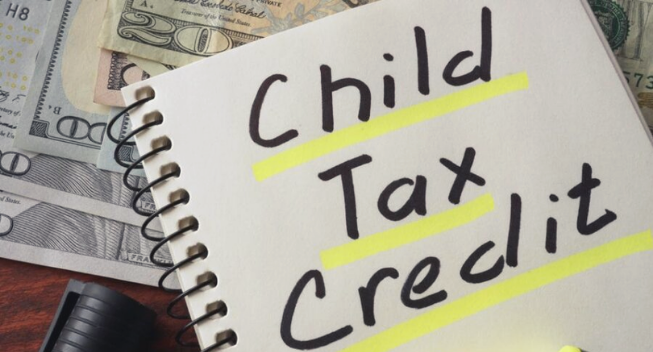The child tax credit has increased to $3,600, with the next advance payment due on December 15th. What you need to know about who qualifies, when payments will be made, and how to opt-out is outlined below.
According to the IRS, more than 36 million American families may be eligible for the child tax in the year. As part of the American Rescue Plan, this non-refundable tax deduction was extended to up to around $3,600 for qualified dependants by 2021. (the coronavirus relief package that took effect in March).
During the first period in US history, CTC beneficiaries could get 50% for their credit like an early payment. For many families, this means an extra $300 per child per month from July through December for much-needed financial assistance. The first five advance payments have been made, with the final installment per year due on December 15. Here’s what you need to know about the child tax credit in 2021.

What is Child Tax Credit?
For each qualified child under the age of 17, this Child Tax Credit program may decrease the income tax liability by $1,000.
Beginning early summers 2021, significant changes to the Child Tax Credit will enable many families to receive tax advance payments. Starting July 15, 2021, the Internal Revenue Service (IRS) can give half of the current account balance within installments. Whenever you submit the 2021 federal tax return, you’ll claim all other portions. These modifications mainly apply to the tax year 2021.
Who is eligible for Child Tax Credit?
The child you are claiming the credit for should be under the age of 17 for being qualified for such a benefits program.
A qualifying child must be a son, daughter, foster child, brother, sister, stepbrother, stepsister, or descendent of these people. Adopted children who have been legally placed with you for adoption are always treated as if they were your own.
A Child and Dependant Caring Tax Incentive provide financial protection up to $8,000 for children and dependents.
Families with an annual income of fewer than 125,000 dollars are eligible to receive a Children or Dependency Services Tax Rebate stimulus payment.
- 50% (up to $8,000) for variable rate for the care of a child under the age of 13 or an official dependent
- 50% of eligible expenses (up to $16,000) for the care of two children under the age of 13 or official dependents
Families earning between 125,000 and 183,000 dollars per year are also eligible for the stimulus check, but they might simply claim up to 20%. However, that sum might be substantial. This money could also be refundable, which means you don’t have to owe taxes to get it.
How to get a stimulation payment for the Child and Dependent Care Tax Credit
It’s critical to understand that this is not an automatic payment. This is one people must proactively claim. You can do so by filling out IRS Form 2441, which details your Child and Dependent Care Expenses. Whenever you submit the federal tax returns, you must include that form.
You might be required to generate verification of such charges you’re collecting, as well as records describing the extent of the disability of certain dependents. The IRS’s Form W-10 (Dependent Care Provider’s Identification and Certification) may be necessary as well.
The procedure is a little more involved than it was for some of the other stimulus payments made under the American Recovery and Reinvestment Act. But, with Thanksgiving and Christmas approaching, with rewards of upward to 8,000 dollars per claim, this could be a good way to get some extra income during the holidays.
How to get the Child Tax Credit?
Only if your modified adjusted gross income is as follows may you fully benefit from the credit.
- Single: less than $75,000
- $112,500 for the head of household.
- $150,000 for married couples filing jointly.
Above specified levels, the credit begins to taper out.
- First phase-out: If your income is more than aforesaid limitations while less than $400,000 (married filing jointly) or $200,000 (single filing), you will be phased out (all other filing statuses). For each $1,000 spent, your total credit per child can be lowered by $50. (Or a fraction thereof). The credits will not be reduced below $2,000 per child as a result of this phase-out.
- Second phase-out: Earnings of more than $400,000 (married filing jointly) or $200,000 (single filing) (other filing statuses). The phase-out will continue the deduct $50 for every $1,000 spent, bringing the credits per child below $2,000 for the first time. It’s possible that you won’t be able to acquire the credit at all.
Low-income families that do not regularly file a tax return can sign up for the monthly advance child tax credit payments via the IRS’s non-filers sign-up service.
The following are a few of the kid-related eligibility conditions for the child tax credit:
- One must have supported the child with at least half of the past years, and the kid should have stayed with you for at least half of that time.
- The youngster is not permitted to submit a joint tax return.
What is the maximum amount you can get per child?
The greatest latest tax returns will be used by IRS to calculate how old the dependents are and how much of a monthly advance to provide you. Remember that advanced is only half of the entire amount and might be paid over 6 months, starting from July and closing by December. You’ll be able to claim the remaining credit on your 2021 tax return.
The child tax credit will provide the following benefits in 2021:
- Up to $3,000 ($250 per month) for every qualified dependant kid under the age of 17 on December 31, 2021.
- From December 31, 2021, up to $3,600 ($300 monthly) each qualified dependent kid under the age of six.
How and when will the additional installments arrive?
The IRS automatically enrolled CTC-eligible families in the advance payment program. The installments are either deposited checking account and issued to you through a paper check (based upon the information the IRS has on record for you — typically your most recent tax return).
However, if the 15th happens to fall or vacation, those remaining 2021 upfront payments were made on the 15th of every month. The next — and final — payment is set for Dec. 15.
Schedule of Monthly Payments
- July 15th
- August 13th
- September 15th
- October 15th
- November 15th
- December 15th
This IRS child tax updates portal allows clients to confirm their account information or desired payment.
What impact would the child tax credit have on your taxes?
The child tax credit is such a dollar-for-dollar reduction in your tax payment. It’s also redeemable, which implies it can reduce your tax payment to zero and perhaps result in a tax return check for any monies leftover. You may have to revise the federal income back at the end of this year if that IRS underpaid the child credit. If your filing status, income, custody arrangements, or permanent residence have shifted after your last return, this could happen.
You can either claim 100 percent of the 2021 child credit whenever you file your taxes in 2021 (i. e., in April 2022), then you can choose-out from advance payments (more on that below). Accept 50% as a down payment and claim the remaining 50% on your taxes later.
How do I opt-out of monthly payments in advance?
You can opt-out of the advance monthly payments by contacting the IRS. Is there any benefit to doing so? It is dependent on your circumstances. Here are a few reasons to think about it.
- You’d rather get the credit in one big payment when you file your return than in two installments.
- You believe the amount you’ll owe the IRS will be more than your expected refund.
Your tax situation has changed dramatically since your last filing (e.g., greater income, your child has graduated from the qualifying bracket, custody changes), and you’re concerned that the IRS may overpay you.
If you need to unenroll, go to the IRS website. Enrollment for the December payment must be completed before Nov. 29.
Child Tax Credit – FAQs
Q1. What is the Child Tax Credit, exactly?
Ans. The Child Tax Credit is a refundable tax credit for households with children.
Q2. When is the deadline for claiming the Child Tax Credit?
Ans. Each year’s deadline for registering for monthly Child Tax Credit payments was November 15. If you are eligible for the Child Tax Credit but did not sign up for monthly payments by November 15, you can still claim the entire credit of up to $3,600 per child when you file your taxes next year.
Q3. Does the Child Tax Credit apply to everyone?
Ans. Almost every family with children qualifies. A certain amount of income is required. Only couples earning less than $150,000 and single parents earning less than $112,500 will be eligible for the increased Child Tax Credit amounts in 2021. High-income families may be eligible for that reduced refund if any at all.


